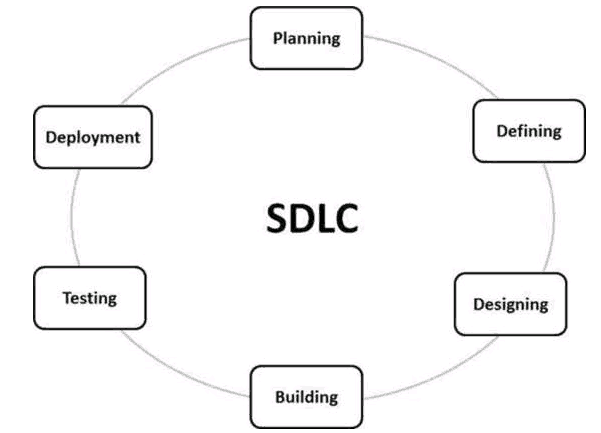SDLC Overview – Simplified to Understand
So, basically we are looking at a simple method which we follow in industry to create high-quality software according to the needs of the customer, and this SDLC method slash process will help in industry to complete the projects within the required time and very less resource indirectly it is the process of making the software development more easy and efficient.
SDLC Overview – Simplified to UnderstandWhy SDLC Is a Life Cycle?1. Planning2. Defining3. Designing4. Building5. Testing6. Deployment
The other name of the SDLC cycle is also SDP – which stands for the software development process. As you have already seen in the diagram of the SDLC cycle that we have six magical components of the process which are planning, defining, designing, building, testing, and deployment. And each one of them has its own value and importance in the life cycle of software development.
Why SDLC Is a Life Cycle?
SDLC is mainly called a life cycle because – it represents the life cycle of particular software that is being created in the industry. From its birth to its users from the user, SDLC defines all the steps that are necessary for software development. All I was in college it was very difficult for me to understand the SDLC cycle all at once, but after reading it several times I got it understood. So, I have decided to share my understanding with all of you using the simplest method that I can think. It is a step-by-step process. So, let’s have a look at it one by one.
1. Planning
It is the most crucial and important step in any software development process in this part we basically planned the main working and outcome of the software that the user needed – and we also discuss the technical feasibility and other design errors that we can have while creating the software. We try to minimize all the potential bugs that may arise in the development process. After that, we will move to the next step in the process of SDLC – which is defining.
2. Defining
This is the second most important step in SDLC because it has the planning part by giving the necessary requirements and resources that are needed for the planning to be successful. And indirectly it helps him make the process of software making feasible.
3. Designing
Designing the user interface and UI, UX of the program is a necessary step in order to make the resultant software usable by the users. Because, in the case, if the software is not well designed, then it will be very difficult for the user to use it and in the end, it will get into the unusable software category by the user. You may have seen much software that is not well designed and people are not willing to use them because it is very difficult and complex to use them, such software is not well designed.
4. Building
This is the main step in the process of SDLC. Because after this step the software is completed. In disturb, we use all the time we spent in the planning and designing the software to save our time in writing the lines of code and reducing the bugs that may arise due to bad planning or worst designing of the software. In the industry, we use various programming languages to develop software as per the developer and users need. Programmers use various tools like compilers debuggers and other three return code tools that have them in coding the program/software as easily and fastly as they can. some of the famous programming languages c, c++, Pascal, java, python, and PHP are used in creating software.
5. Testing
The final step after all the necessary steps of creating the software before launching it in the market for giving it to the particular user – it is very important to test the outcome of the software. In this phase, we do two kinds of testing alpha testing and beta testing – and, in them, we first use the software via a software testing team and then we give to the user for other testing measures. After completing this step we go to the next step of the SDLC cycle.
6. Deployment
This is the final step of the SDLC process in software development. Software is completed it needs to be deployed in the market or it needs to be sent to the particular user who ordered it to the industry. After that, if any of the birds are found then and we repeat the process from the planning phase and keep the software update it every time it gets any bug report from the user.

